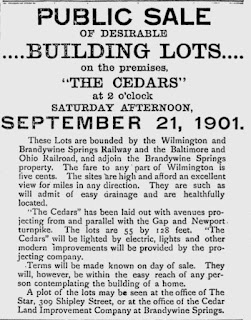I would be remiss if I didn't call attention to
this story from last weekend, in case anyone missed it. In what is now becoming a disturbing pattern, there was yet another fire at the abandoned Mundy Farm, also known as the
Rev. Patrick Kenny Farm. This time, the fire was located in the large, stone barn that looms over the site where Fr. Kenny's house once stood. The historic 1812 house was destroyed in a fire on February 10, 2010. That blaze was determined to have been arson, and in September 2010,
two teenage boys were convicted of setting the fire.
This most recent fire occurred last Sunday, September 11, as many of the firefighters were preparing for a
memorial service at the Delcastle Recreation Area in remembrance of the 343 firefighters lost in the 9/11 attacks. The fire was extinguished in about a half an hour, but did "significant damage" to the structure. The barn, the original part of which was constructed by Rev. Kenny soon after he took up residence in his new home and which was expanded several times over the years, was thankfully still standing after the ordeal. The only question is, for how long?
It's been well documented that the owners of the property would like to develop the site, and now with the house gone and the barn heavily damaged, I wouldn't put much money on the long-term survivability of the site. Thankfully, the adjacent cemetery and site of the first Coffee Run Mission is a separate parcel, still owned by the Catholic Church. Again, to me, this is another reminder that these historic structures we have are not guaranteed to always be here, and that we need to study and appreciate them while we can.
Update 10/13/2011:
The
News Journal is reporting today that "Two Hockessin-area boys, ages 15 and 16, have been charged with arson and conspiracy in a Sept. 11 fire that burned a
vacant barn...". Where have I heard this before?

































